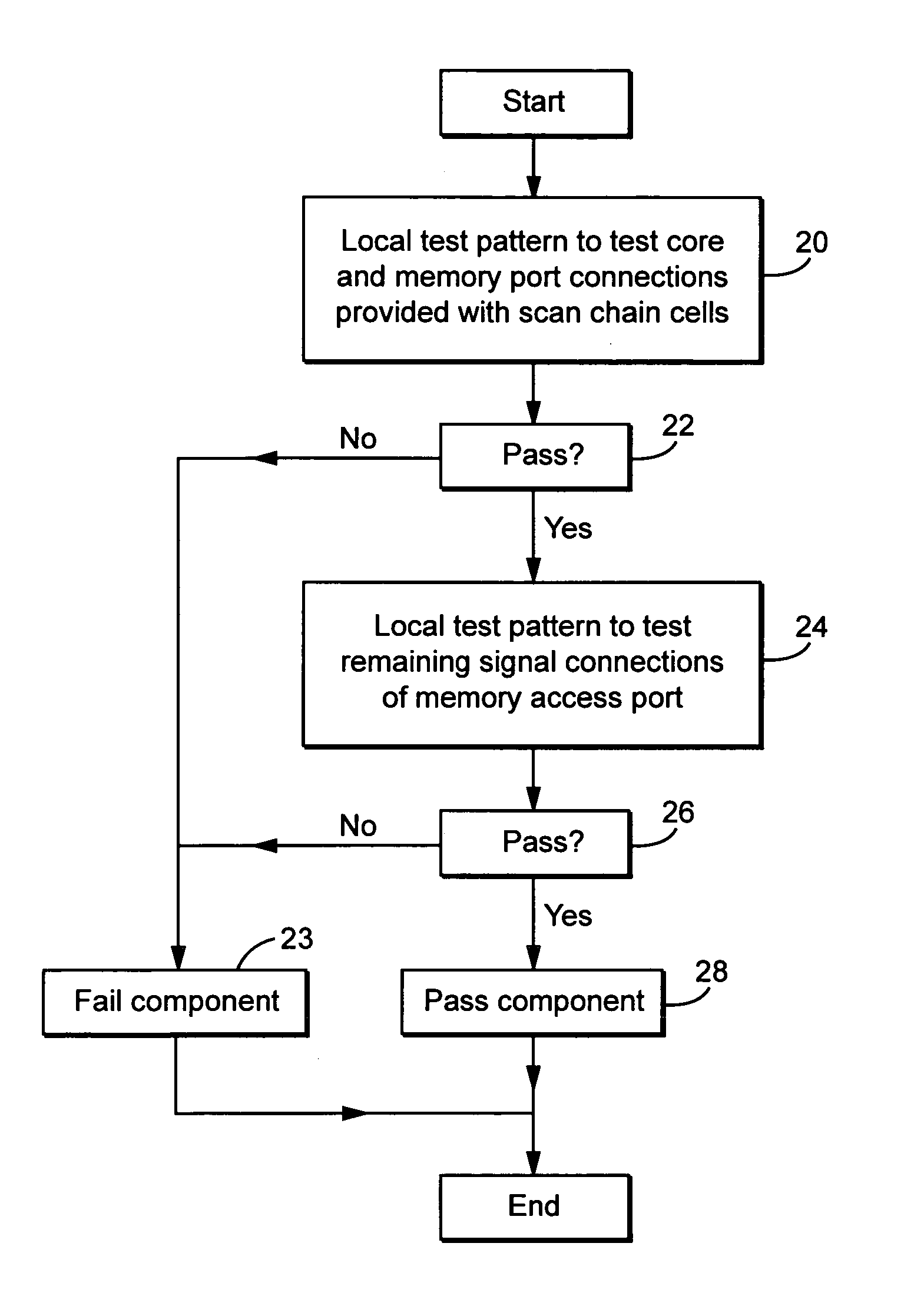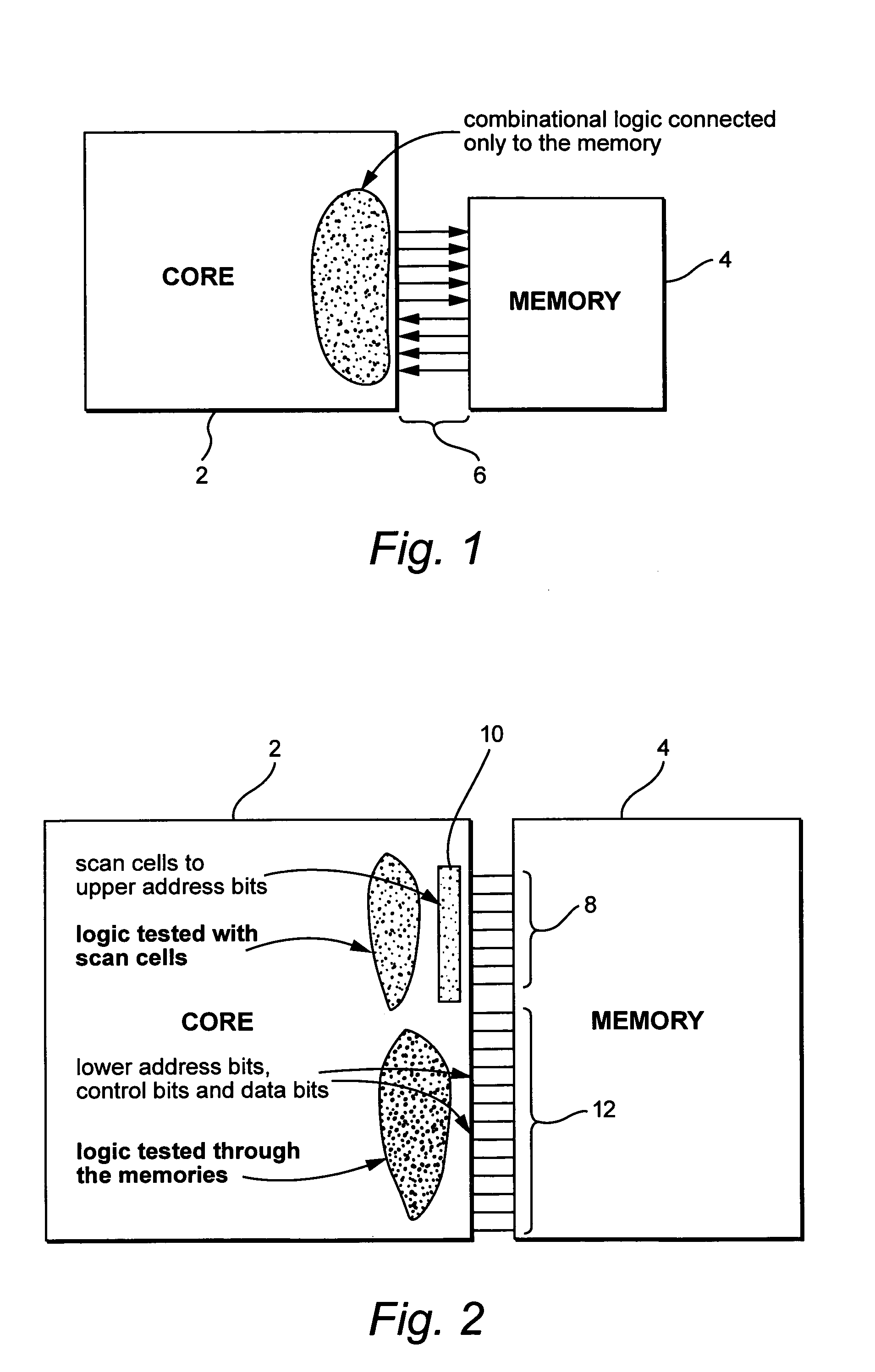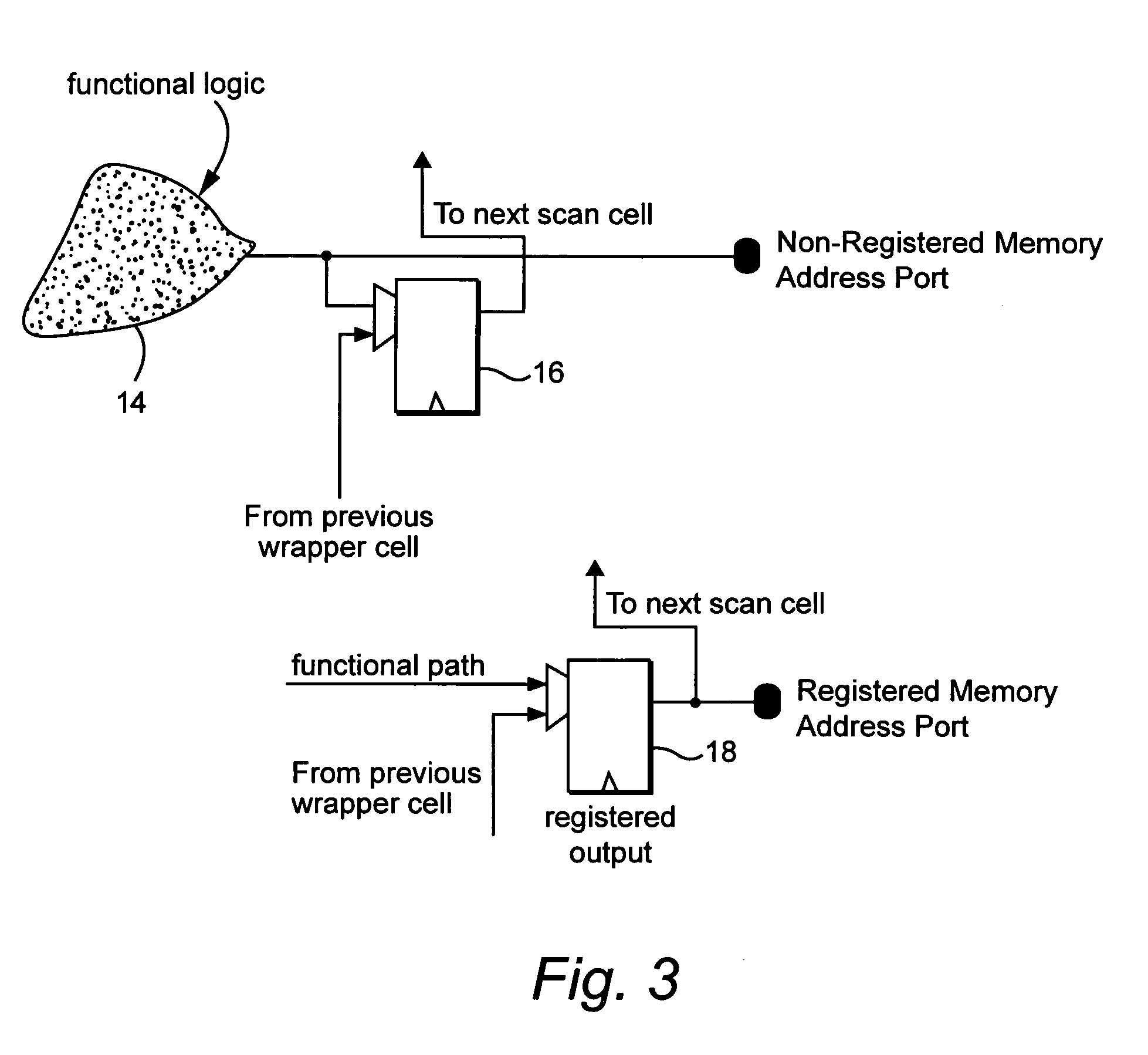Testing memory access signal connections
a technology of memory access and signal connection, which is applied in the direction of electronic circuit testing, hardware monitoring, instruments, etc., can solve the problems of increasing the difficulty of gaining access to deeply embedded portions of the integrated circuit with no direct connection to the external pins of the integrated circuit, increasing the difficulty of designing appropriate test patterns to provide comprehensive test coverage, and increasing the need for testing in this way
- Summary
- Abstract
- Description
- Claims
- Application Information
AI Technical Summary
Benefits of technology
Problems solved by technology
Method used
Image
Examples
Embodiment Construction
[0032]FIG. 1 shows a portion of an integrated circuit including a processor core 2 and a memory 4. Combinatorial logic within the processor core 2 is connected to the memory access port 6 and does not connect to other portions of the system to enable it to be otherwise tested. The memory 4 can vary in size depending upon the particular requirements of the system concerned (in some systems no memory may be present) and such variation in size can have an impact upon the precise form of the memory access port 6 and the memory access signal connections utilized. Accordingly, running a test operation upon the processor core 2 to exercise the memory access port 6 does not enable different sizes of memory 4 to be tested and would require different test pattern sets to be generated to stimulate the processor core 2 appropriately so as to accommodate all the different memory sizes possible for the memory 4. Memory size signals, which are usually tied during instantiation of a particular inte...
PUM
 Login to View More
Login to View More Abstract
Description
Claims
Application Information
 Login to View More
Login to View More - R&D
- Intellectual Property
- Life Sciences
- Materials
- Tech Scout
- Unparalleled Data Quality
- Higher Quality Content
- 60% Fewer Hallucinations
Browse by: Latest US Patents, China's latest patents, Technical Efficacy Thesaurus, Application Domain, Technology Topic, Popular Technical Reports.
© 2025 PatSnap. All rights reserved.Legal|Privacy policy|Modern Slavery Act Transparency Statement|Sitemap|About US| Contact US: help@patsnap.com



